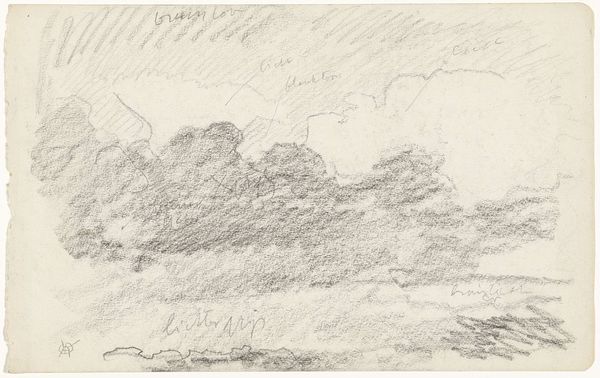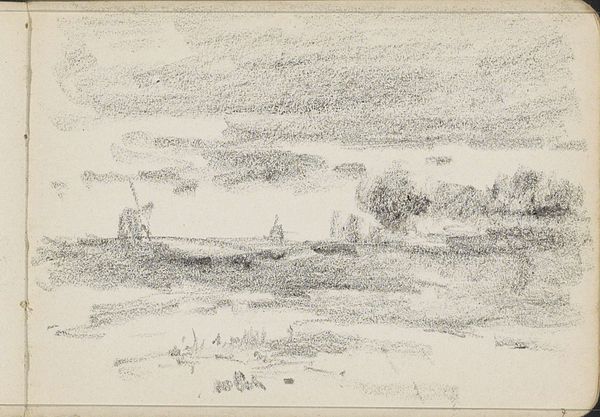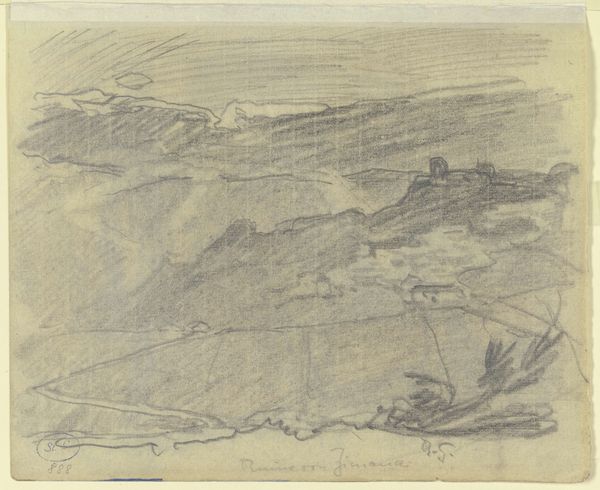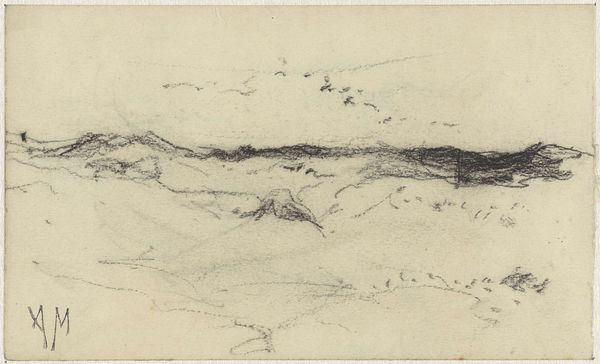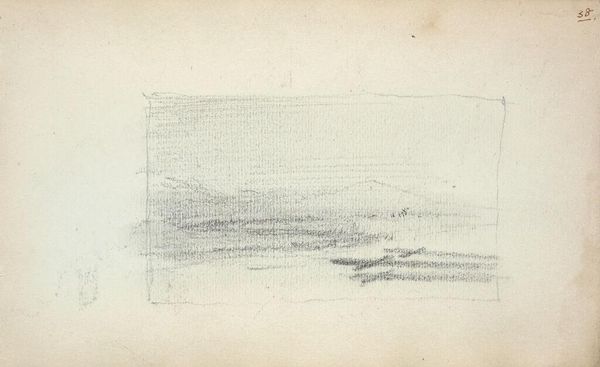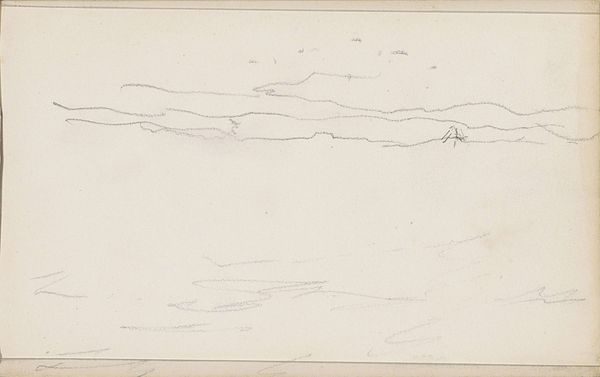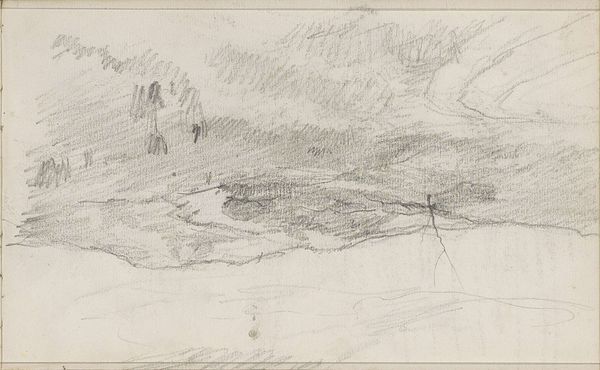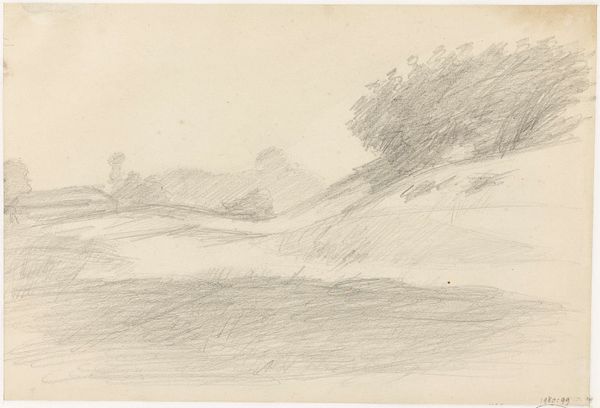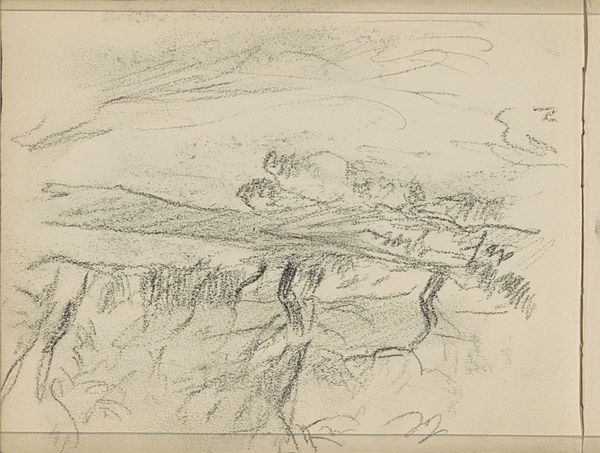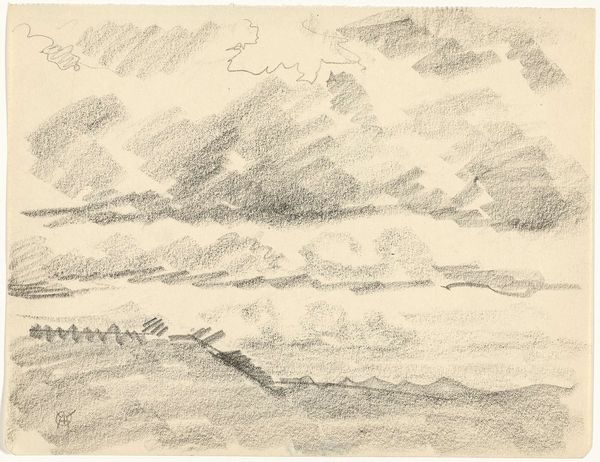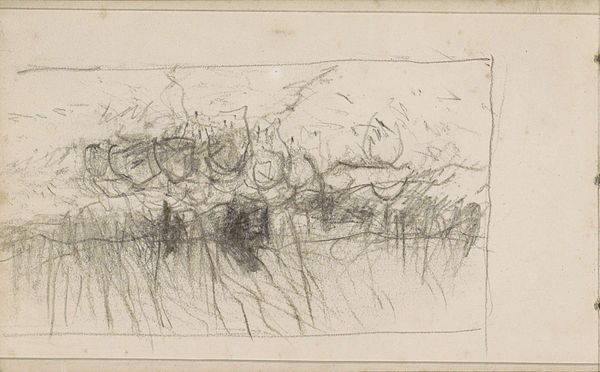
Dimensions: height 164 mm, width 214 mm
Copyright: Rijks Museum: Open Domain
Curator: Standing before us is Gerrit Willem Dijsselhof's "Wolkenlucht met kleurnotities," created sometime between 1876 and 1924. It’s a subtle pencil drawing currently held here at the Rijksmuseum. Editor: My initial impression is one of ephemeral beauty. The stark contrast of the dark, heavily rendered clouds against the light paper gives it a dramatic feel, almost as if we're witnessing a storm brewing. Curator: Exactly. The abstraction leans towards something akin to early Impressionism, capturing not a precise representation but the feeling, the essence of the cloudscape. The tonal values alone shape the viewer’s perception, establishing depth and light solely through mark making. Editor: I'm particularly interested in the artist's mark-making. Consider the visible labor evident in each stroke—the build-up of graphite creating these masses. The handwritten colour notations scattered across the sketch make me wonder, what pencils were used? Where were they made? These sketches were vital to the making, to what end did Dijsselhof create this piece, in the first place? Curator: Those "kleurnotities," the colour notes, are fascinating. Dijsselhof appears to be using this study not as a finished work, but rather as a preliminary exercise to capture chromatic information. The marks, the directions, are all signifiers in this artistic language he is formulating. Editor: Right, but these notations also reveal the social context, to the industry around art supplies. From the mines where the graphite was extracted to the factory floor. The materiality is essential. This sketch unveils the interconnectedness between artistic creation and industrial production. Curator: And ultimately it brings us to the drawing itself. A formal study that manages to evoke such a distinct feeling. Consider, finally, the impact the composition of these forms bring—the dynamic arrangement, the weight the cloud masses appear to carry; it is impressive work. Editor: Well said. It encourages me to delve even further into the role that labour and materials have played within this visual encounter. I see in this unassuming landscape sketch, so many open questions to explore regarding the cultural industries of the period.
Comments
No comments
Be the first to comment and join the conversation on the ultimate creative platform.
